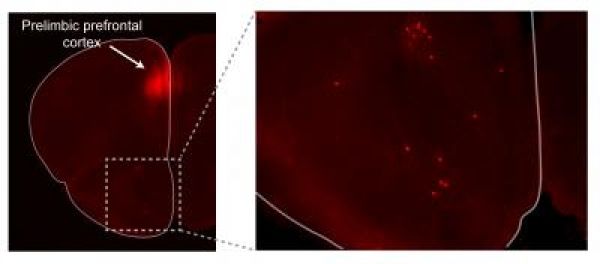“Take a deep breath” is the mantra of every anxiety-reducing advice list ever written. And for good reason. There’s increasing physiological evidence connecting breathing patterns with the brain regions that control mood and emotion.
Now, Minghong Ma, PhD, a professor of Neuroscience in the Perelman School of Medicine at the University of Pennsylvania, and Penn doctoral student Andrew Moberly, have added neurons associated with the olfactory system to the connection between behavior and breathing. These findings are published this week in Nature Communications. Connecting patterns in these interactions may help explain why practices such as meditation and yoga that rely on rhythmic breathing can help people overcome anxiety-based illnesses.
“We wanted to know why and how fear behavior, controlled breathing, and smell centers of the brain were connected,” Ma said. “What really drives our interest is finding out what we can extrapolate about this relationship to learn about the evolution of behavior and apply this knowledge to help ease the pain associated with such disorders as post-traumatic stress disorder.”
In earlier studies, Ma found that ends of neurons in the nose have odor sensors as well as the ability to detect the rate of breathing. “The nose really does double duty in its function,” Moberly said. “Why and what role does this have in behavior and what does that fear behavior look like in rodents? Their behavioral choices for survival are fight, flight, or freeze.”
Read more at University of Pennsylvania School of Medicine
Image: Florescent cells in the prelimbic prefrontal cortex brain regions, with inset of cells in olfactory brain regions that project to the prelimbic prefrontal area. (Credit: Andrew Moberly, Perelman School of Medicine, University of Pennsylvania)


